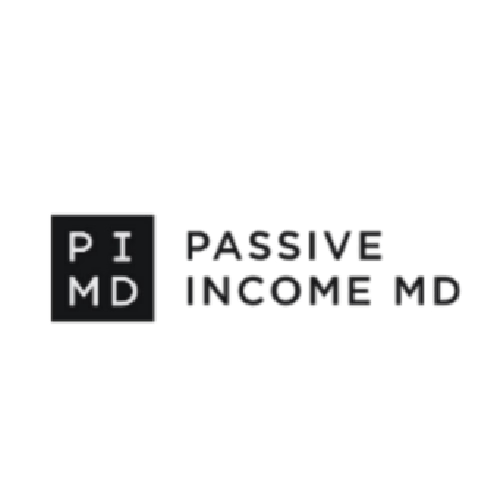The current financial landscape presents both unprecedented challenges and unique opportunities for business owners. With interest rates at 20-year highs and traditional banks tightening lending standards, securing business funding in a high-interest economy requires a strategic approach. Amidst these headwinds, innovative funding strategies are helping savvy entrepreneurs not just survive, but to thrive.
George Otel, also known as “the Financing Guy”, founder of US Business Funding and featured expert on the Wealth Unfiltered podcast, has helped over 10,000 businesses secure financing in this challenging environment. His insights reveal a fundamental truth: Access to capital for entrepreneurs isn’t about desperation; it’s about strategic timing and smart structuring. Below, we break down his key funding strategies, common pitfalls, and smart business loan options for 2025.
Navigating High Interest Rates
Capital isn’t just about survival—it’s the engine that drives momentum. In real estate and private equity, access to capital determines whether you can seize opportunity or sit on the sidelines. It fuels acquisitions, unlocks development, supports value creation, and enables scale. When used strategically, capital amplifies your returns, allows you to move decisively in a competitive market, and shields you from having to make reactive decisions in times of uncertainty.
From 2022 to 2024, financing conditions were the tightest in recent memory. In response to soaring inflation, the Federal Reserve raised interest rates at the fastest pace since the 1980s—lifting the benchmark rate from near zero to 5.25%-5.5%. The impact was immediate: borrowing became significantly more expensive, deal underwriting got more conservative, and liquidity dried up across the board. Many investors froze. Lenders pulled back. But Otel emphasizes that the right financing still works—if you focus on ROI. It’s not about chasing cheap debt; it’s about ensuring that every dollar of capital creates outsized value.
SBA Loans: Best Small Business Loans for High-Interest Environments
When traditional lending gets expensive, SBA (Small Business Administration) loans stand out as one of the most cost-effective solutions for entrepreneurs. Backed by the federal government, SBA loans often offer interest rates 2–3% lower than conventional business loans, making them an attractive option when the Fed keeps rates elevated.
Even better? They come with longer repayment terms—up to 25 years for real estate—which dramatically lowers monthly obligations and improves cash flow.
“Government loans are a no-brainer. There’s nothing cheaper to push through tough times.” – Wealth Unfiltered
In a capital-constrained environment, SBA loans are more than a funding tool—they’re a strategic cushion for growth.
Asset-Based Financing: Unlocking Capital from What You Already Own
When cash flow is tight and banks are reluctant, asset-based financing gives business owners a lifeline by leveraging equipment, vehicles, or inventory as collateral. In 2023, equipment financing approvals hit 73%, the highest of any loan category, reflecting lenders’ growing confidence in secured assets during periods of economic uncertainty.
“Some use equipment as collateral to secure lower rates when cash flow is tight.” – George Otel
For businesses in manufacturing, logistics, or trades, this isn’t just funding—it’s turning idle assets into active growth capital.
Commercial Real Estate Loans: The Retirement Plan for Small Business Owners
Commercial real estate isn’t just a roof over your business—it’s one of the smartest wealth-building strategies available to entrepreneurs. Otel refers to it as the “retirement plan for small business owners” because it transforms rent expenses into long-term equity and optionality.
In one standout example, a client replaced their $10,000 monthly lease with a $9,000 mortgage, instantly improving cash flow while owning the building outright.
“Commercial real estate with your business combined—it’s much better. You can sell the business or lease the building. It’s really a wealth-building strategy.”
This strategy offers dual upside: operational efficiency today, and asset appreciation tomorrow. Whether you exit your business or keep the building as passive income, you’re investing in your future—not your landlord’s.
Smart financing isn’t just about getting cash, it’s about structuring debt to build long-term business wealth. Beyond traditional financing methods, some business owners explore alternative investment strategies to bolster their financial resilience. Understanding the nuances between different capital-raising regulations can be pivotal to staying ahead of funding challenges.
The #1 Mistake: Waiting Until It’s Too Late
According to the 2025 Report on Employer Firms by the Federal Reserve, 56% of small businesses that applied for financing in the past year did so to cover operating expenses, indicating that many seek funding reactively instead of proactively.
Why this hurts:
- Banks charge higher rates to risky borrowers.
- Fewer options are available in a cash crunch.
- Opportunities are missed (like buying property at a discount).
Secure business loans before you need them.
2025 Funding Playbook
Looking ahead, Otel highlights three underrated funding strategies for business owners:
Asset-Based Lending
- Why it’s underrated: Most business owners think of debt in terms of credit scores and cash flow—but many overlook the untapped capital sitting on their balance sheet.
- By using inventory, receivables, or equipment as collateral, companies can secure funding even when profit margins are tight or traditional lenders say no. This strategy gives businesses liquidity without sacrificing equity or overleveraging with high-interest unsecured loans.
SBA 7(a) Loans
- Why it’s underrated: Despite being one of the most versatile and affordable options for small business financing, SBA loans are often ignored due to perceived complexity.
Otel calls this a mistake. SBA 7(a) loans are ideal for working capital, acquisitions, and debt refinancing—all with lower rates and longer repayment terms backed by the government. In an environment where traditional loan approvals are slowing, SBA financing gives you the runway to grow without being suffocated by high-interest payments.
Commercial Real Estate as a Hedge
- Why it’s underrated: Most business owners see rent as a fixed cost, not a missed opportunity. Otel flips that mindset.
Instead of paying a landlord’s mortgage, owning your commercial property allows you to build equity, control your costs, and create long-term asset value. It’s a strategy that transforms an expense into an investment—providing optionality whether you decide to sell your business or keep the real estate as a passive income source.
The best loans for small businesses in 2025 will be strategic, not reactive. In a high-interest world, the difference between thriving and merely surviving often comes down to timing, education, and strategy. As George Otel’s playbook shows, navigating business funding strategies in 2025 isn’t just about getting access to capital, it’s about making smart, forward-thinking moves that build long-term value. Whether you’re investing in commercial real estate, leveraging assets, or exploring SBA loan options, the most successful business owners are the ones who plan ahead. Don’t wait for a financial crunch; position your business now with the right funding strategy for growth.
Watch the Full Episode
For more insights on funding strategies for small businesses – including how Otel’s team helped a client get approved in 36 hours after a bank rejection – check out the full Wealth Unfiltered episode on YouTube.
Need a Custom Funding Plan?
Connect with US Business Funding.




















